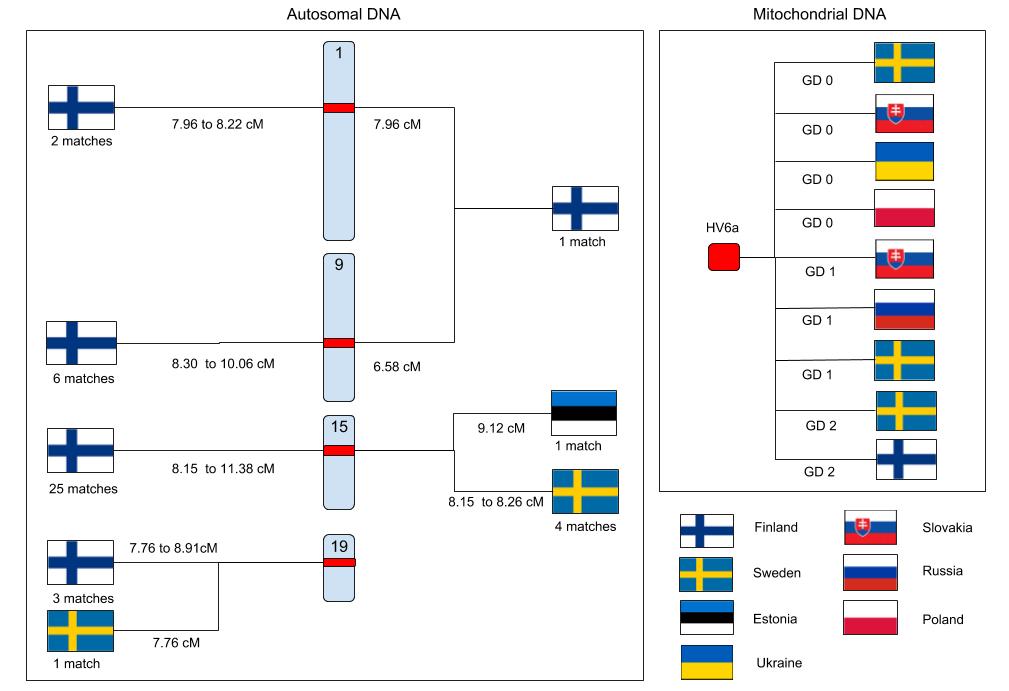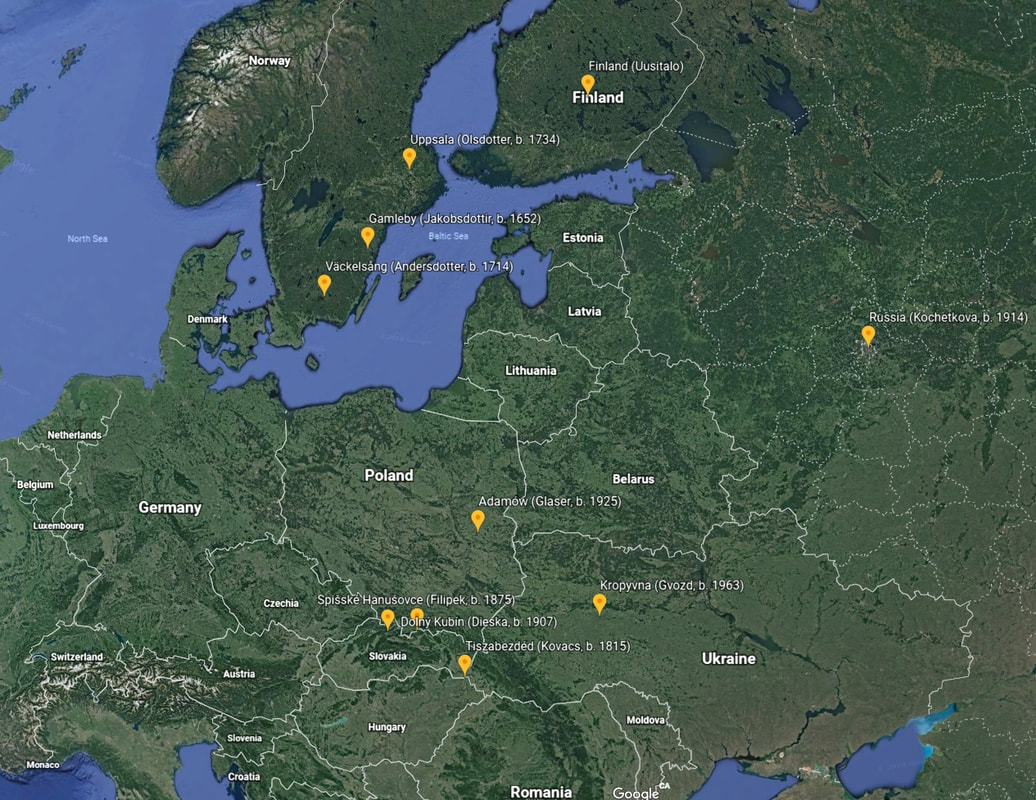|
My Mom and I have a few Finnish relatives or at least we share segments of identical DNA with them. Although when I say a few, I really mean A LOT! Perhaps as many as a hundred, who have mostly tested on Family Tree DNA. Additionally, the new Ancestry ethnicity results, it shows my mother 95% Eastern European, which now rolls in all those little percentages such as Mongolian and Turkish, and 5% Estonian. It's interesting that the Estonian, which are a Finno-Ugric speaking people, still stands out. Now, I have zero doubt that all my Mom's grandparents were born in Hungary and I'm very certain that there has been no misattributed parentage in the last few generations of my Mom's family tree... so why is she genetically related to all these Finns, Swedes, and Estonians? These four autosomal segments are almost certainly identical by state, which means that many people in a population share them. Three of four of my mother's grandparents come from a small cluster of villages in northeast Hungary, where their families may have lived for centuries, likely with considerable intermarriage among the same group of families for generations, resulting with most people in the population sharing some common DNA segments. If a similar phenomenon occurred in some small villages in Finland, the common Finnish-Hungarian ancestor for these segments may have lived many centuries ago. Meanwhile, on the mitochondrial DNA (mtDNA) front, as expected I have eastern Europeans as my closest matches but the Swedes and Finn are close too. On the map below, we can see the distribution of my mtDNA matches. The Swedes can actually trace back ancestry to the 18th or even 17th century while the Eastern European matches appear to be limited to 19th or 20th century ancestry, meaning there could have been a lot of movement in the preceding centuries. Since mtDNA is inherited only from mothers, this connection goes straight down my female line to Tiszabezdéd, in that small cluster of villages in northeast Hungary. The connection I have with these northern Europeans is certainly several centuries old, perhaps well over a 1000 years old.
If the Finnish connection on mtDNA and autosomal DNA lines have the same source, and both point to common ancestors who lived long ago, could this connection go right back to the nomadic Finno-Ugric speaking Magyar that settled the Carpathian basin in 895 AD? Or perhaps the Swedes settled more recently in these area or some Slavic woman was "relocated" to Sweden? A connection here is undeniable but the nature of that connection may remain a mystery for a while. Comments are closed.
|
Archives
2023 JAN FEB MAR APR MAY JUN JUL AUG SEP 2022 JAN FEB MAR APR MAY JUN JUL AUG SEP OCT NOV DEC 2021 JAN FEB MAR APR MAY JUN JUL AUG SEP OCT NOV DEC 2020 JAN FEB MAR APR MAY JUN JUL AUG SEP OCT NOV DEC 2019 JAN FEB MAR APR MAY JUN JUL AUG SEP OCT NOV DEC 2018 JAN FEB MAR APR MAY JUN JUL AUG SEP OCT NOV DEC 2017 JAN FEB MAR APR MAY JUN JUL AUG SEP OCT NOV DEC 2016 JAN FEB MAR APR MAY JUN JUL AUG SEP OCT NOV DEC 2015 JAN FEB MAR APR MAY JUN JUL AUG SEP OCT NOV DEC 2014 OCT NOV DEC Categories |


 RSS Feed
RSS Feed